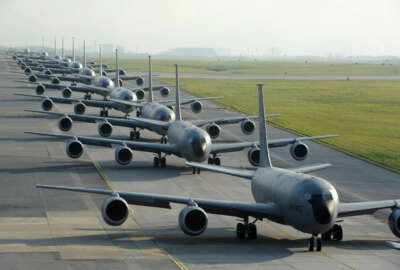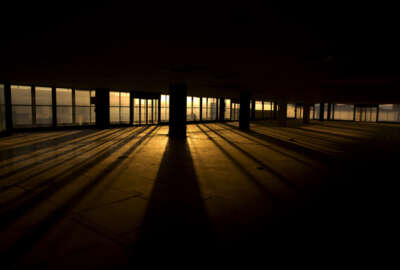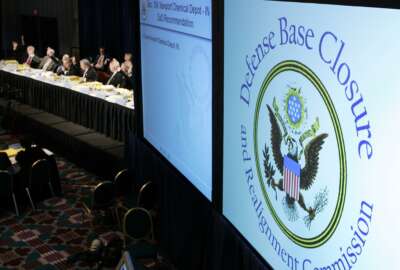
In lieu of BRAC, Air Force makes its own assessments about most valuable bases
Now that Congress looks poised to reject the Defense Department’s requests for another round of base realignments and closures (BRAC) for a fifth year in a row,...
Now that Congress looks poised to reject the Defense Department’s requests for another round of base realignments and closures (BRAC) for a fifth year in a row, the Air Force has decided to start its own process to calculate how valuable each of its bases actually are to the various missions it performs.
That’s a step that DoD officials, until now, have been extremely reluctant to take for fear of biasing any potential BRAC round that may still lie in the future. In each of the five rounds so far, an independent commission has made its own judgments about military value and used them as one of the key criteria for which bases should remain open and which could be shuttered.
But Richard Hartley, the principal deputy undersecretary of the Air Force for installations, environment and energy said this week that the Air Force could no longer wait to at least begin a process that would let it make its own decisions about how to allocate military forces that have shrunk significantly over the past two decades against a real estate portfolio that has not.
“We need a better understanding of the military value of our installations and to do some more strategic thinking about where to invest our limited resources,” he told the Association of Defense Communities’ annual summit in Washington. “We don’t know exactly how we’re going to use this analysis yet. We don’t like this approach because it won’t get us the kind of savings a BRAC would, it’s not as transparent and it doesn’t give us the objectivity an independent commission does. But we can’t assume we’re going to be successful in getting a BRAC, so we’ve got to start a deeper look at our infrastructure.”
Each of the military services has already conducted some assessments of the aggregate amounts of excess real estate they believe they have — the figure is 32 percent in the case of the Air Force — but those estimates have not tried to assess the military value each installation brings to the table.
Hartley said the Air Force would use a process similar to those that have been used by BRAC commissions since the first round in the early 1990s.
“We’ll look at what kinds of missions might be possible at base X because of things like geography and airspace. Then, if you know you can run these missions at this base, how well equipped is that base? That involves questions like whether it has enough land or munitions storage facilities,” he said. “The third component is the accessibility to respond in a crisis and access to training environments. Which base gets me to the fight fastest? And then you have to look at the cost of running the installation.”
Although Hartley emphasized that the Air Force has not decided what to do with the information churned out by the new analysis, the Defense Department does have some legal authorities to close installations outside of the BRAC process.
Politically, employing those authorities would amount to a sort of nuclear option, but Defense officials have previously said they might sidestep the BRAC process in the face of Congressional inaction by taking advantage of existing provisions in federal law that allow the Defense secretary to close bases unilaterally.
Those procedures require DoD to send Congress detailed reports on a base’s military value and the impact its closure would have on the local economy. Another section in the same statute says any base can be closed if the President certifies that doing so is necessary “for reasons of national security.”
Each of the military branches, the Air Force and Army in particular, have argued in congressional testimony for several consecutive years that a combination of excess basing and severely declining funds for upkeep of those bases has created military readiness challenges as insufficient maintenance led to water main breaks, electrical substation fires, failing buildings and unusable runways.
The Air Force estimates it has $23 billion in backlogged maintenance requests, but it spends the lion’s share of its current-year sustainment and restoration budget on responses to emergency concerns, such as last month’s order by the EPA that a drinking water well at Wright-Patterson Air Force Base in Ohio be taken offline because high levels of a firefighting chemical were found in the base’s water supply.
“There’s a lot more winners out of a BRAC than there are losers,” Hartley said. “The communities win and the airmen win, because we’re not spreading these scarce infrastructure resources so thinly across more infrastructure than we need.”
Congressional views on BRAC have moderated somewhat since 2011 when DoD first requested another round. The 2016 Defense authorization bill included a provision that cracked the door to another BRAC by ordering DoD to conduct a comprehensive study of its basing needs compared to the military forces it had as of 2012, the point in time before each of the armed services began cutbacks brought on by the Budget Control Act.
On Wednesday, Rep. Adam Smith (D-Wash.), the ranking member on the Armed Services Committee and one of Capitol Hill’s few supporters of another base closure round, introduced legislation that would alter BRAC by emphasizing cost-cutting and additional congressional oversight as part of the process. The bill aims to overcome some of the most common arguments around the most recent BRAC round in 2005, whose up-front costs were billions of dollars higher than originally estimated and which closed only a handful of bases.
Copyright © 2025 Federal News Network. All rights reserved. This website is not intended for users located within the European Economic Area.
Jared Serbu is deputy editor of Federal News Network and reports on the Defense Department’s contracting, legislative, workforce and IT issues.
Follow @jserbuWFED






